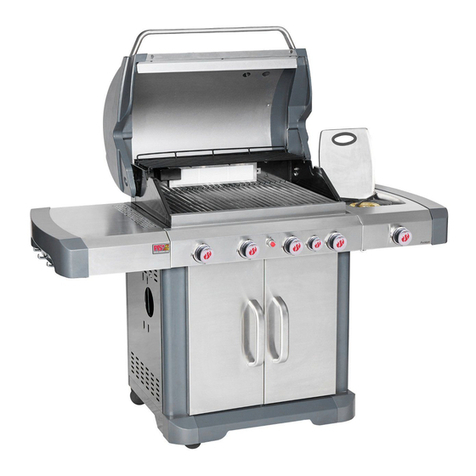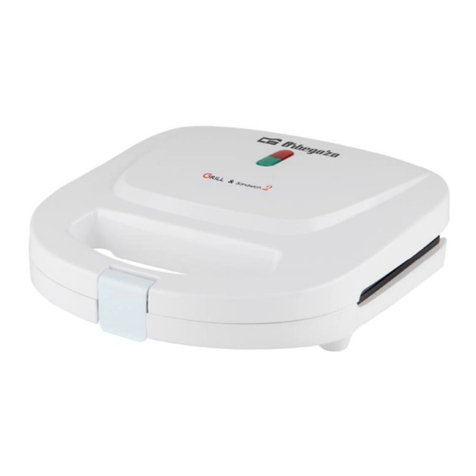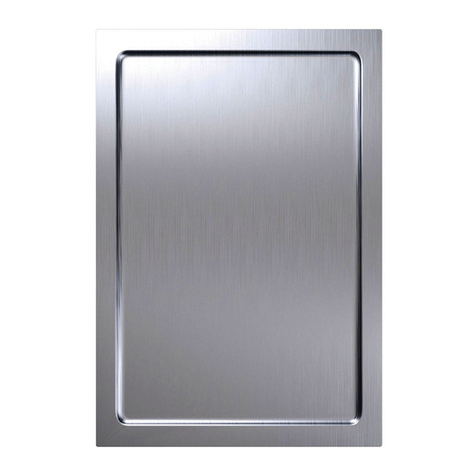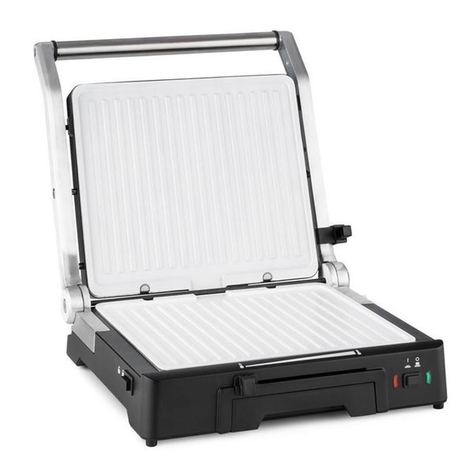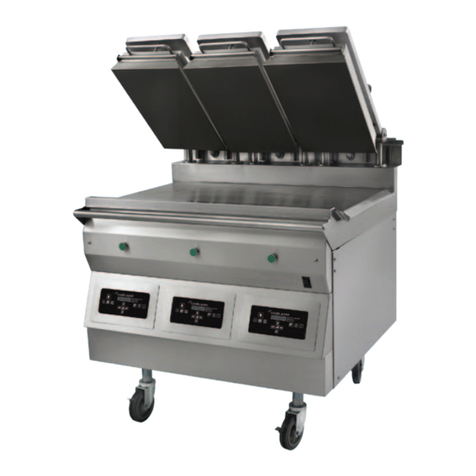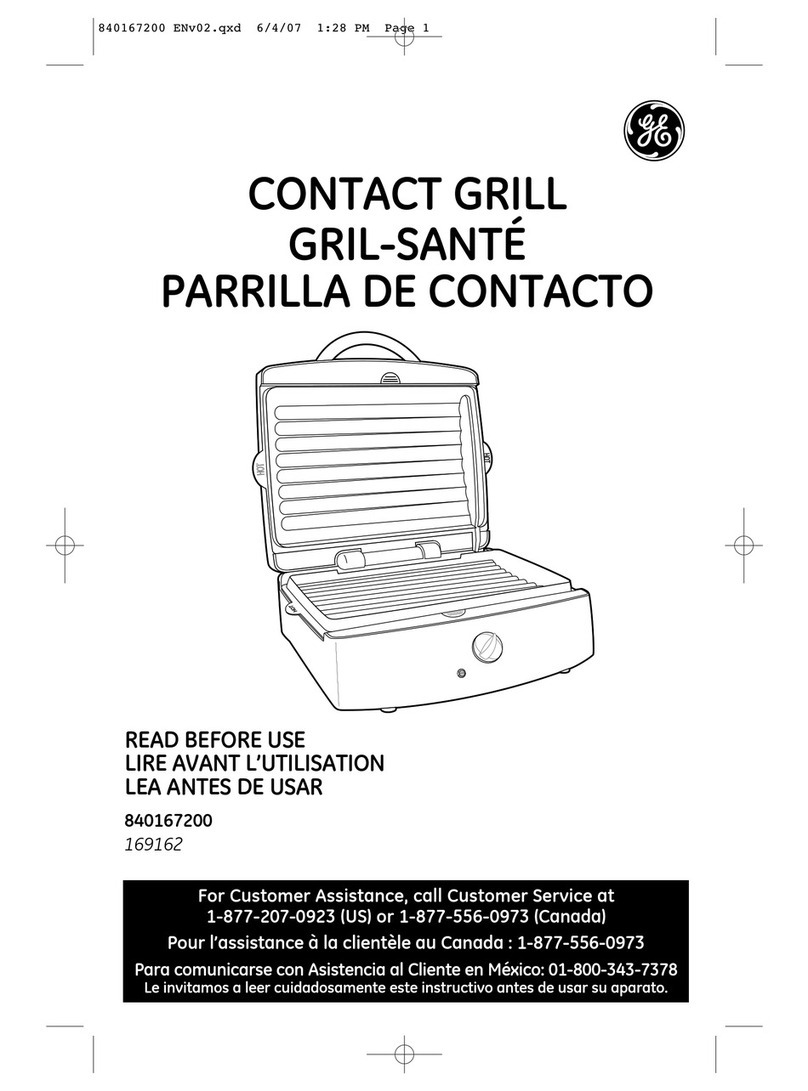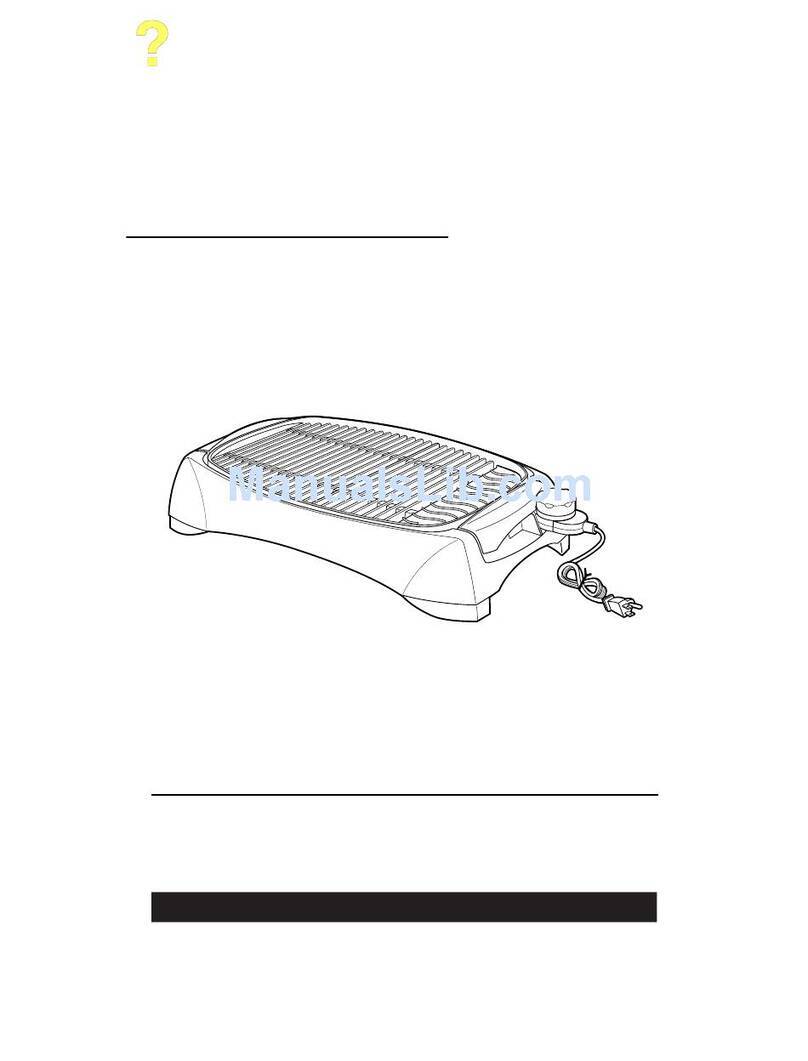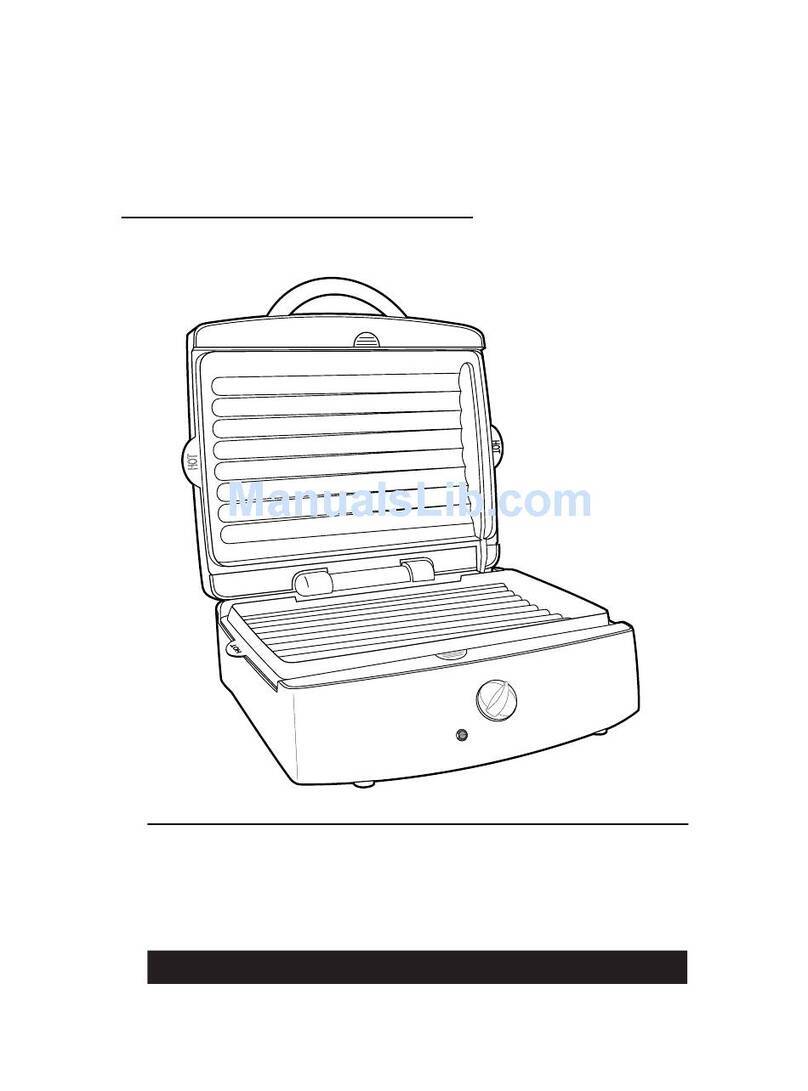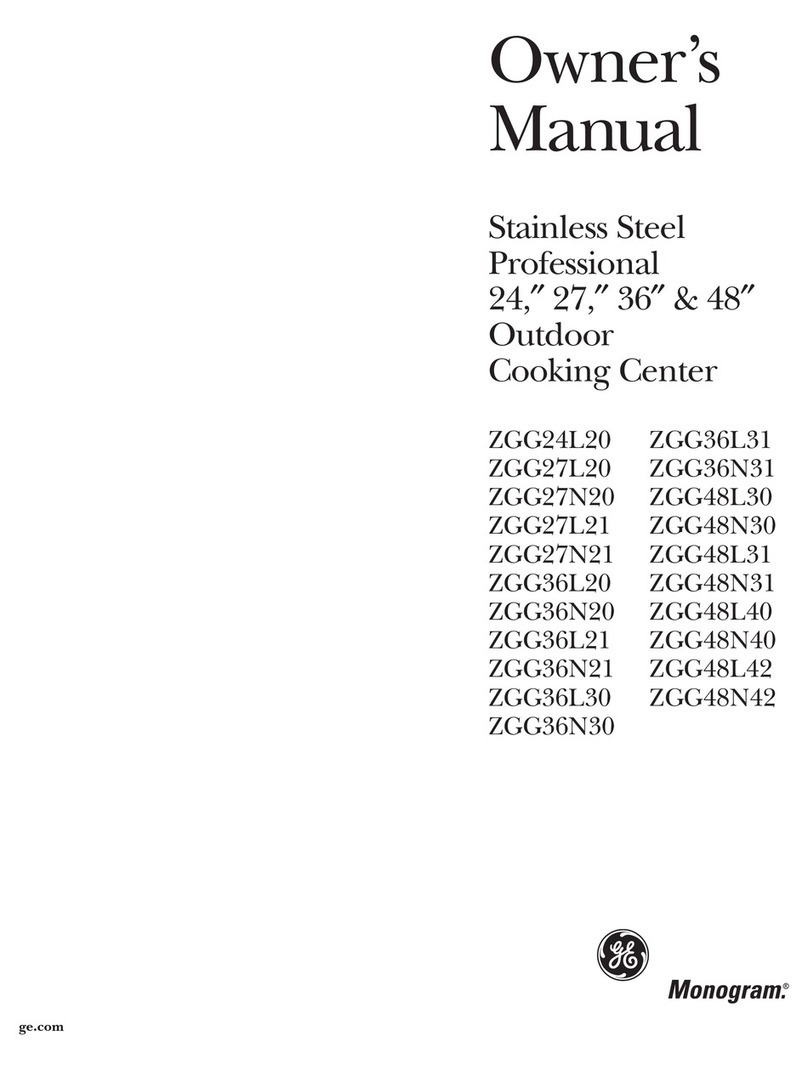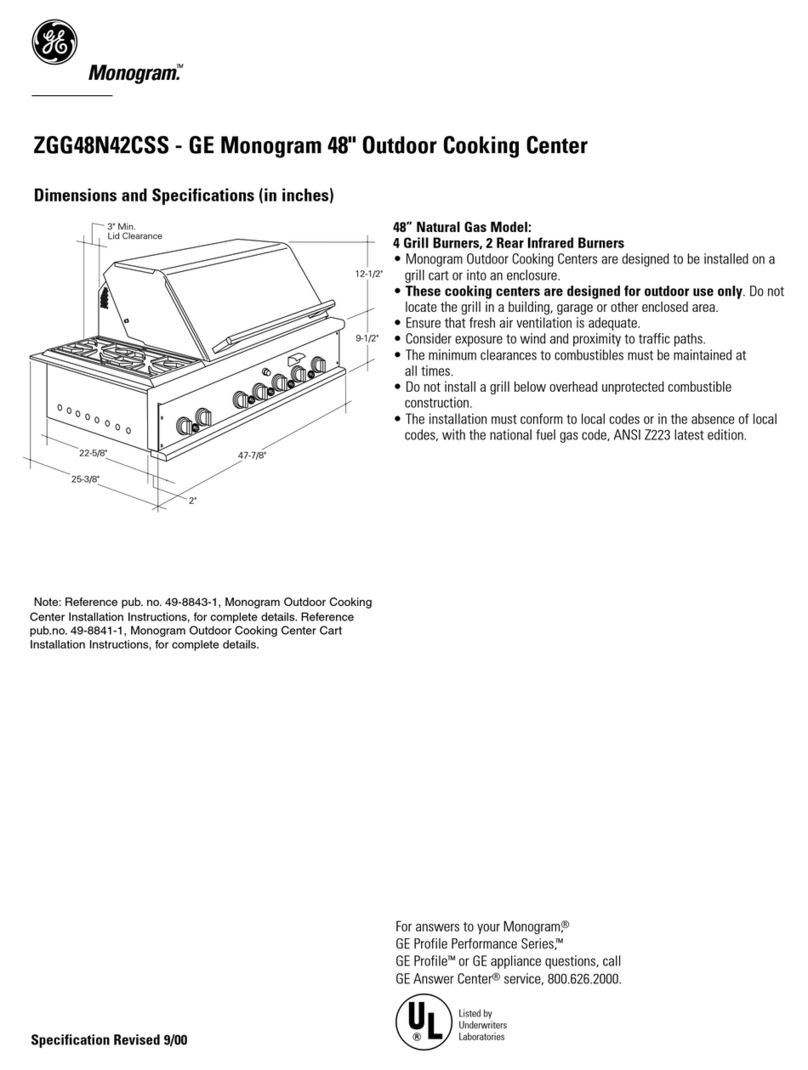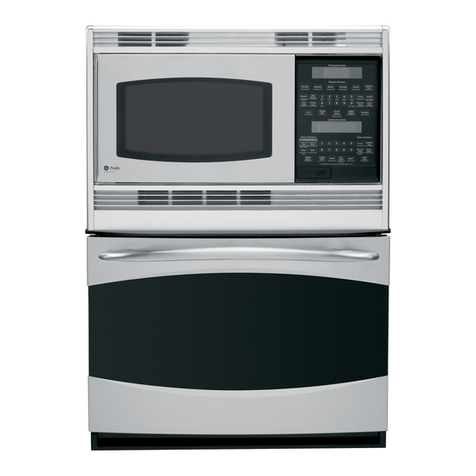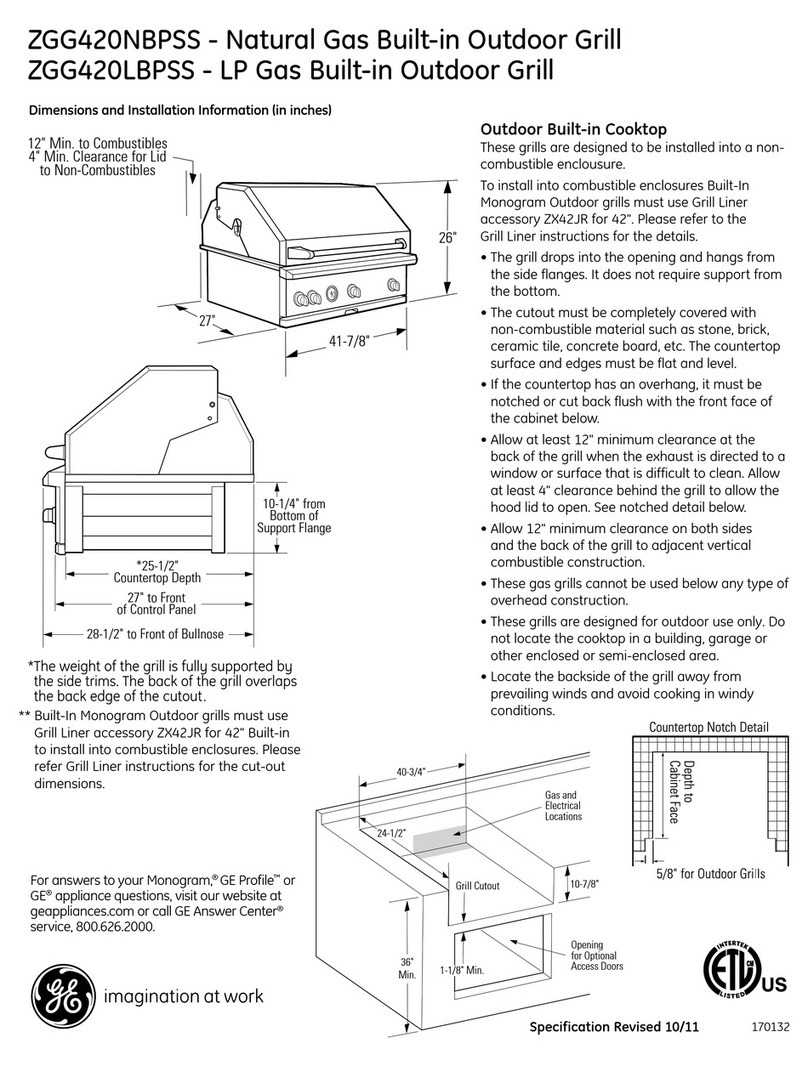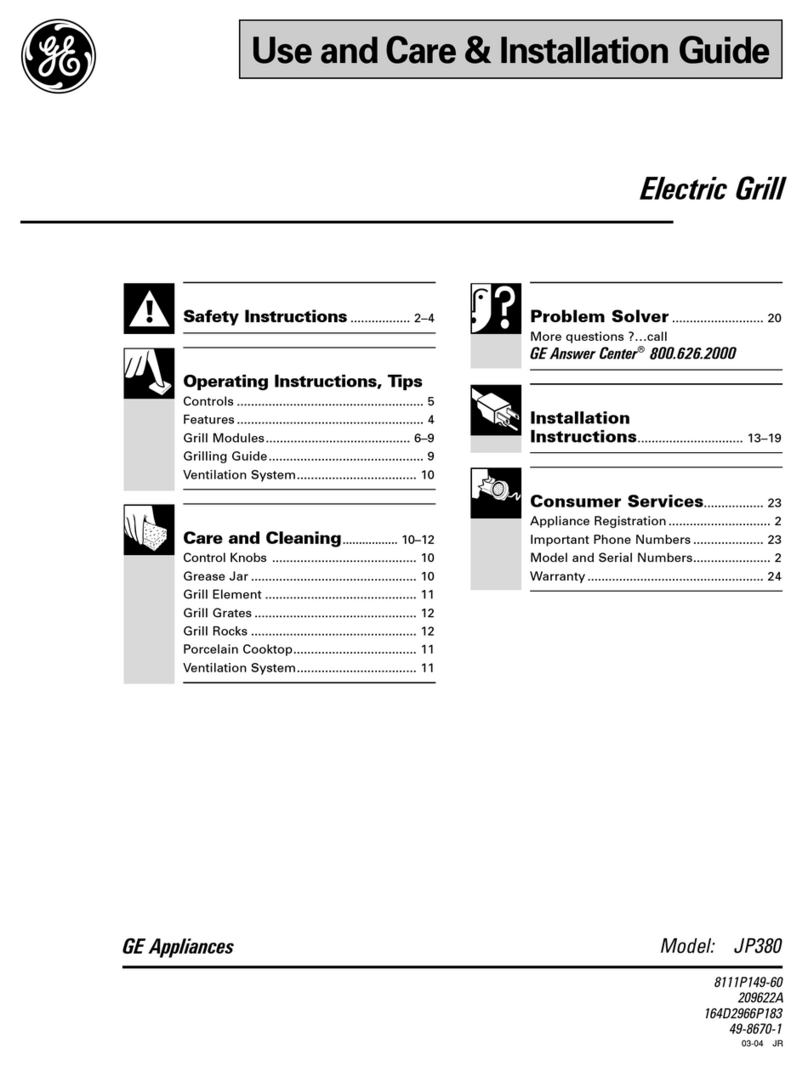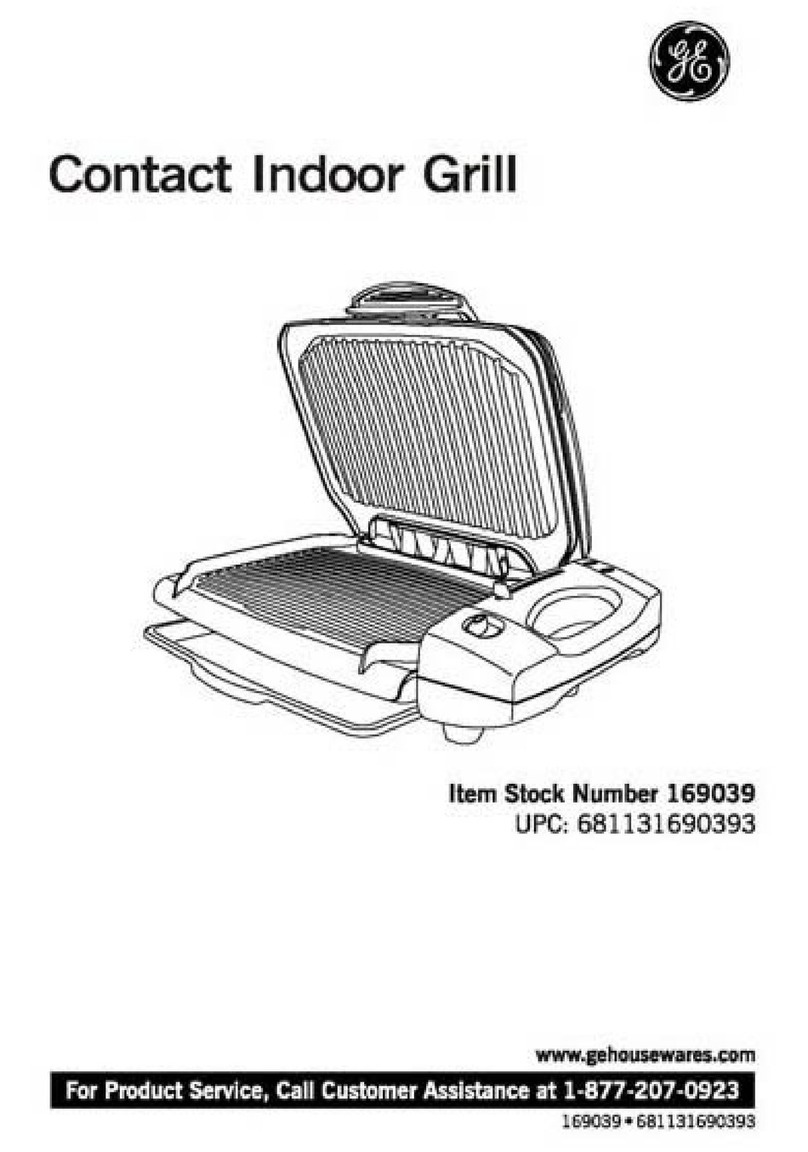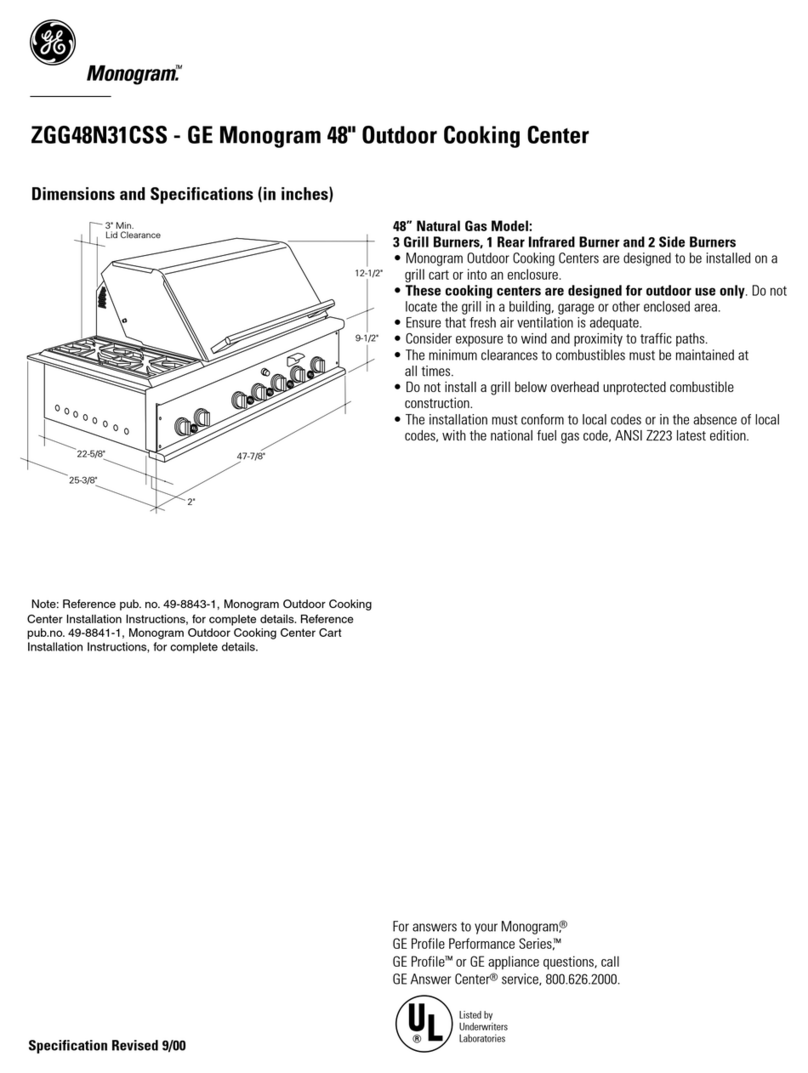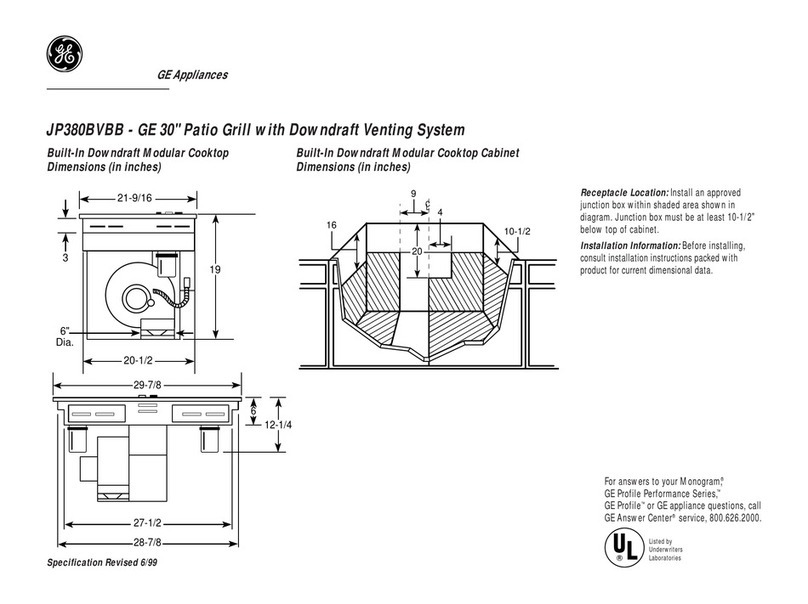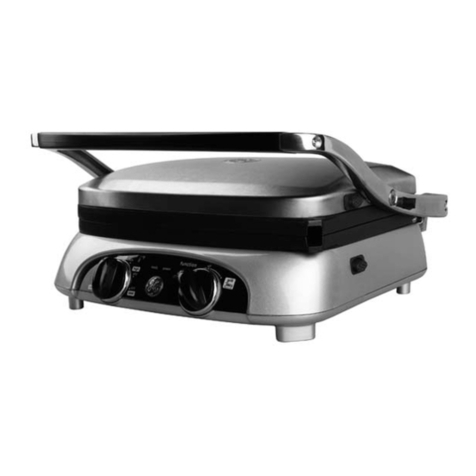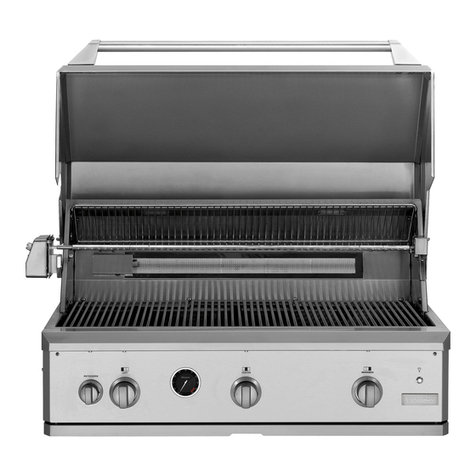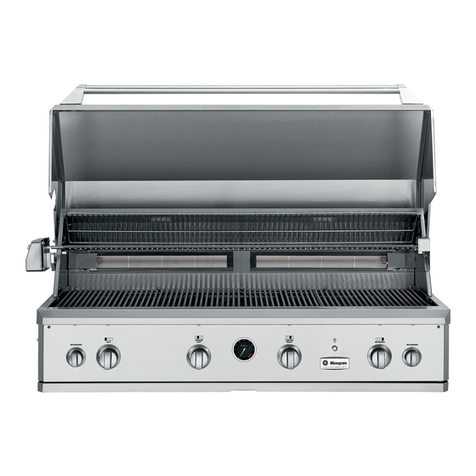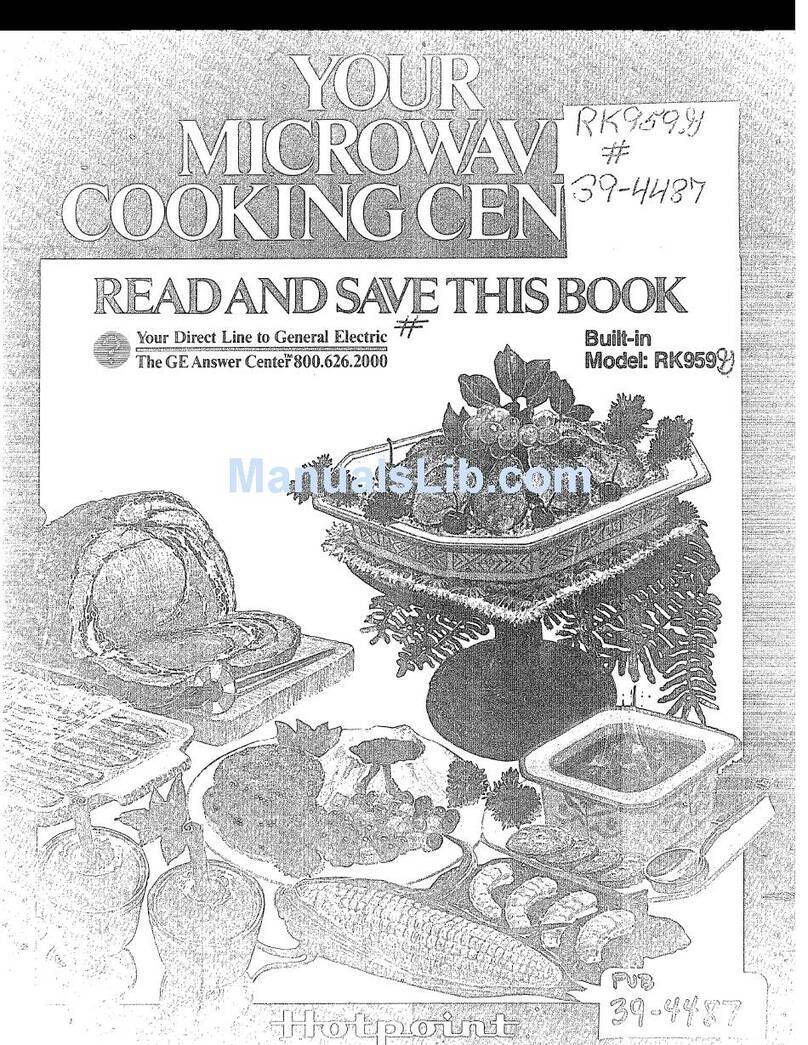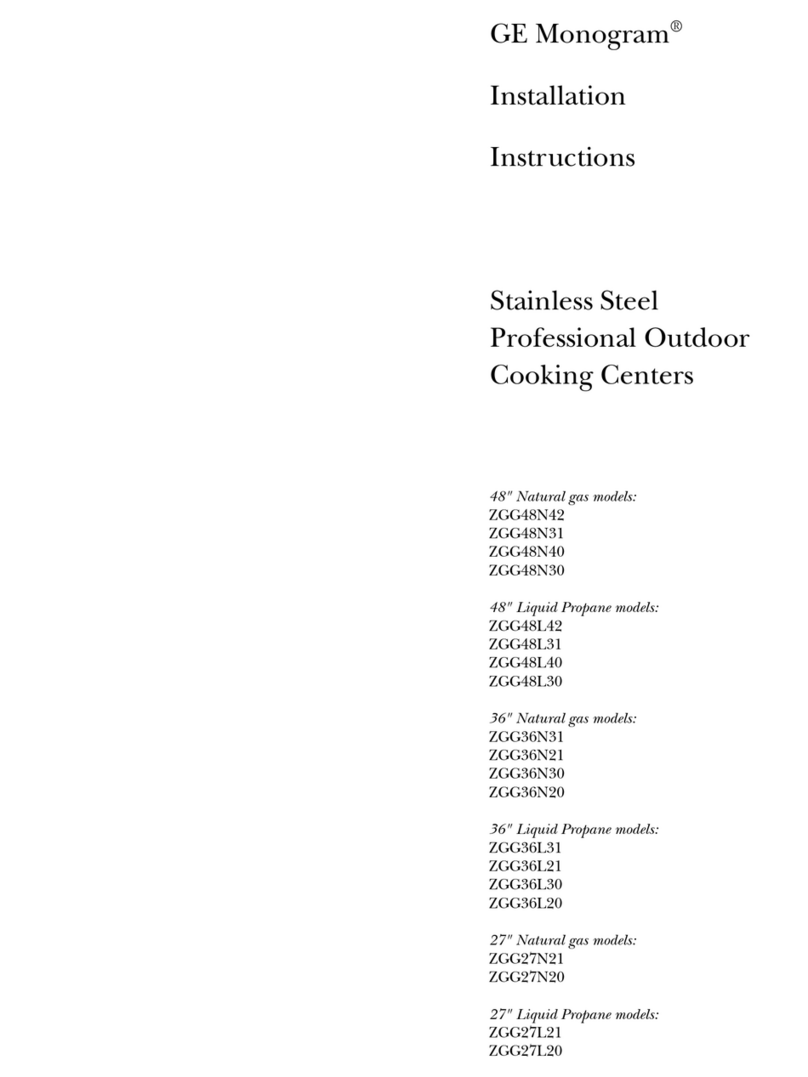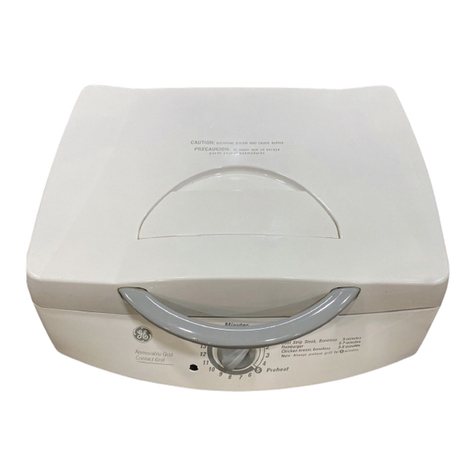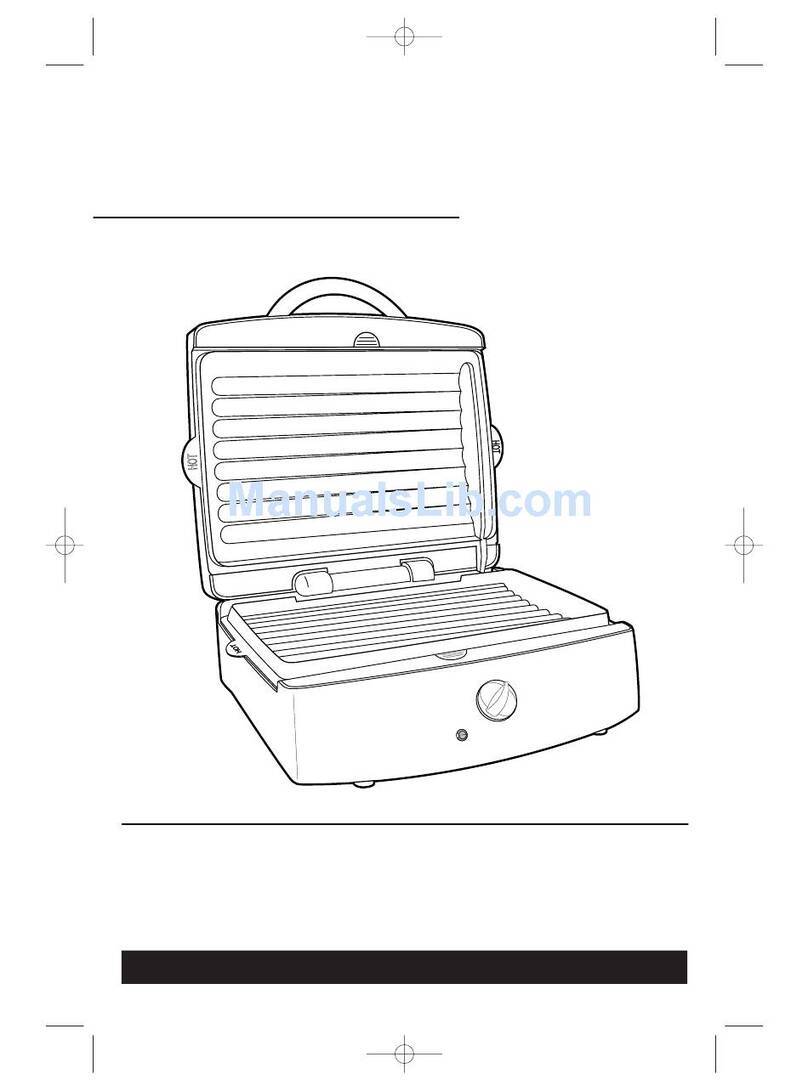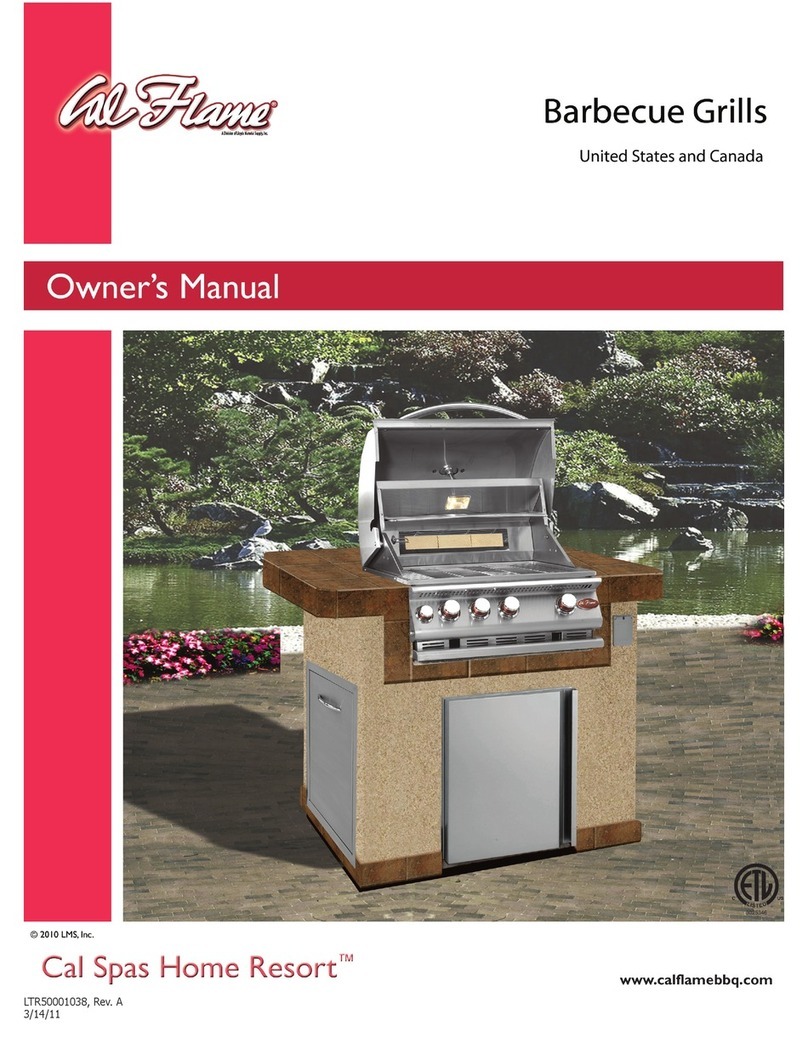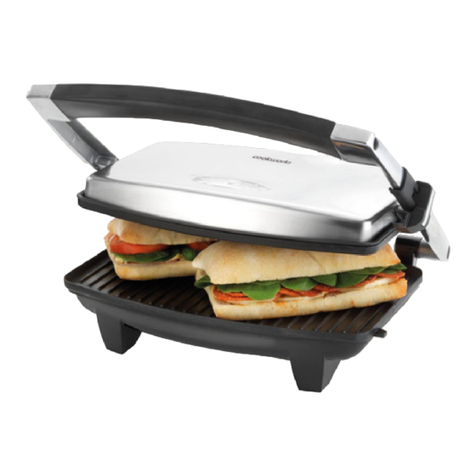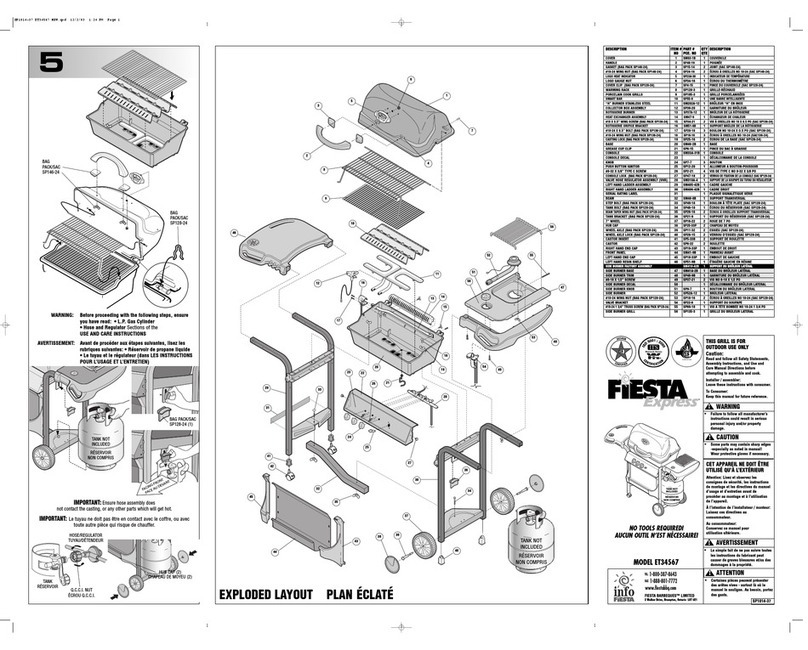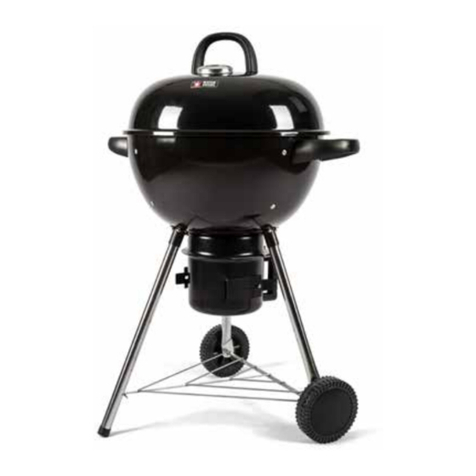J
‘i
●
IMPORTANT SAFETY INSTRUCTIONS
(continued)
●
Plastic Cookware-Plastic cookware designed for
microwave cooking is very useful, but should be
used carefully. Even microwave-safe plastic may
not be as tolerant of overcooking conditions as are
glass or ceramic materials and may soften or char if
subjected to short periods of overcooking. In
longm
exposures to overcooking, the food and cookware
could ignite. For these reasons: 1) Use
microwave-
safe plastics only and use them in strict compliance
with the cookware manufacturer’s recommendations.
2) Do not subject empty cookware to microwaving.
3) Do not permit children to use plastic cookware
without complete supervision.
●
Not all plastic wrap is suitable for use
in microwave ovens. Check the package for
proper use.
%
.
~~Boilable”
cooking pouches and
tightly closed plastic bags should be
slit, pierced or vented as directed on
the package. If they are not, plastic could burst
during or immediately after cooking, possibly
resulting in injury. Also, plastic storage containers
should be at least partially uncovered because
they form a tight seal. When cooking with
containers tightly covered with plastic wrap,
remove covering carefully and direct steam away
from hands and face.
Eii!=l
●
Spontaneous boiling—Under certain
special circumstances, liquids may start
to boil during or shortly after removal
from the microwave oven. To prevent burns
from
splashing liquid, stir the liquid briefly before
removing the container from the microwave oven.
Surface
Cooking
●
Always use the LITE position when igniting
top burners and make sure the burners have
ignited.
●
Never leave surface burners unattended at
high flame settings. Boilover causes smoking and
greasy spillovers that may catch on fire,
●
Adjust top burner flame size so it does not
extend beyond the edge of the cookware.
Excessive flame is hazardous.
●
To minimize the possibility of burns, ignition
of flammable materials, and spillage, turn
cookware handles toward the side or back of the
range without extending over adjacent burners.
6
●
Never block the
vents
(air
o~enings)
of the
range. They provide the air
inlet
and outlet that
are necessary for the range to operate properly
with correct combustion. Air openings are
located at the rear of the
cooktop
and at the top
of the oven door.
●
Do not
use
a wok on the cooking surface if
the wok has a round metal ring that is
placed
over the burner grate
to
support the wok, This
ring acts as a heat trap, which may damage the
burner grate and burner head. Also,
it
may cause
the burner to work improperly. This may cause a
carbon monoxide level above that allowed by
current standards, resulting in a health hazard.
●
Always turn surface
burner
to OFF before
removing cookware.
●
Carefully watch foods being fried
at
a high
flame setting.
●
Foods for frying should be as dry as
possible. Frost on frozen foods or
moisture
on
fresh foods can cause hot fat to bubble up and
over sides of pan.
●
Use least possible amount of fat for effective
shallow or deep-fat frying. Filling the pan too
full of fat can cause spillovers when food is added.
●
If a combination of oils or fats will be used
in frying, stir together before heating or as fats
molt
slowly.
●
Always
hea$
fat slowly, and watch as it heats.
●
Use a deep fat thermometer whenever
possible to prevent overheating fat beyond the
smoking point.
*
Never try to move a pan of hot fat, especially
a deep fat fryer. Wait until the fat has cooled.
●
Use proper pan size-Avoid pans that are
unstable or easily tipped.
Select
cookware
having flat bottoms large enough to cover burner
grates, To avoid spillovers, make sure cookware
is large enough to contain the food properly. This
will both save cleaning time and prevent
hazardous accumulations of food, since heavy
spattering or spillovers left on range can ignite.
Use pans with handles that can be easily grasped
and remain cool.
●
When using glass cookware, make sure it is
designed for top-of-range cooking.
*
Keep all plastics away from top burners.
